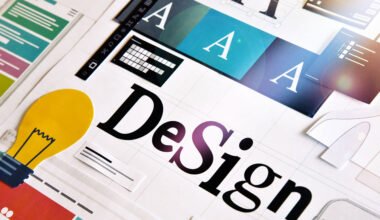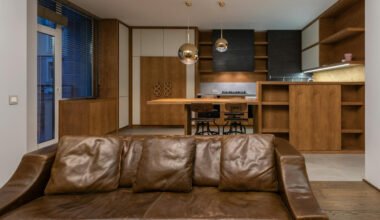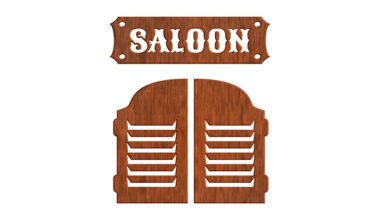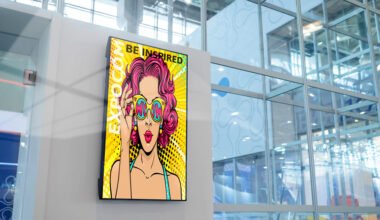In a world where creative thinking drives innovation, the physical environment in which ideas are developed plays a critical role in shaping their quality and execution. Whether you’re an artist, designer, educator, or entrepreneur, the way your workspace is designed can either enhance or hinder your creative flow. From ergonomically supportive seating to tools that facilitate visual thinking, investing in the right setup isn’t just a matter of aesthetics—it’s a proven strategy for improving comfort, focus, and idea generation.
The modern creative studio or office isn’t a static space. It’s dynamic, adaptive, and tailored to the ways we think, move, and work. This article explores three essential elements of a productive and inspiring workspace: ergonomic seating, mobile idea-generation tools, and efficient accessories that keep your thoughts—and your space—organised.
The Power of Ergonomics: Comfort Fuels Creativity
One of the most overlooked killers of creativity is physical discomfort. If your back aches after 30 minutes or you’re constantly adjusting your posture, your brain isn’t fully free to explore, visualise, and problem-solve. That’s where ergonomic furniture comes in—especially for creative professionals who spend hours sketching, designing, or brainstorming.
A high-quality leather office chair, for example, doesn’t just offer visual elegance—it provides essential lumbar support, adjustable features, and cushioning that supports longer sessions of seated work. The blend of form and function found in genuine leather seating can elevate the overall feel of your creative environment while protecting your posture and spine.
For artists and designers who need to lean forward, swivel, or adjust angles frequently, features like tilt-lock mechanisms, seat depth adjustment, and padded armrests make a measurable difference. As a bonus, leather chairs are also easy to clean and durable—important qualities in fast-paced creative settings where spills and wear-and-tear are common.
Visual Thinking and Mobility: Why Portable Whiteboards Matter
Creative processes are rarely linear. One idea sparks another, sketches turn into prototypes, and projects often require a blend of collaboration and individual deep work. In these contexts, having tools that allow you to visualise thoughts in real time is critical. This is where the portable whiteboard shines.
Unlike static boards mounted to a wall, a portable whiteboard gives you the flexibility to move your thinking space anywhere in the room—or even to another room altogether. Whether you’re conducting a team brainstorm, storyboarding a marketing campaign, or mapping the user journey of an app, a rolling whiteboard becomes a visual anchor for ideas as they evolve.
Modern mobile whiteboards often come with dual-sided surfaces, lockable castors for stability, and magnetic functionality for attaching sketches, documents, or prompts. They’re also popular in co-working spaces and classrooms for this reason—enabling fluid transitions between solo and group creativity.
From a psychological perspective, writing by hand activates brain regions linked to learning and memory more effectively than typing. That’s why many creatives continue to rely on dry erase boards despite digital alternatives. A portable whiteboard ensures your creative zone remains adaptable, uncluttered, and always ready to capture the next breakthrough idea.
Organisation Without Disruption: Tools that Make a Difference
Even the most inspired ideas can be lost in cluttered, chaotic workspaces. This is especially true in multidisciplinary studios where art supplies, digital devices, and paper documents often compete for space. To maintain momentum without compromising order, small accessories become essential—none more so than writing tools.
If you’re using a whiteboard regularly, you’ll need reliable whiteboard markers that don’t dry out too quickly, smudge easily, or fade over time. Investing in high-quality markers means you won’t lose your train of thought due to a pen that fails mid-session. Look for ones with low-odour ink and chisel tips, which offer both precision and bold visibility.
Beyond writing tools, consider integrating desk organisers, stackable trays, and labelled bins to separate visual brainstorming tools from digital accessories. Many creatives also benefit from cable management systems to keep laptop and monitor cords out of the way.
Pro tip: Try creating “zones” within your workspace—one for messy creative work, one for planning, and one for clean digital execution. This can help reduce cognitive overload and make transitions between project phases smoother.
Aesthetics and Inspiration: The Feel of a Space Matters
Function alone doesn’t make a workspace great. The emotional experience of being in your studio or office contributes just as much to creativity as the tools within it. Studies in environmental psychology show that spaces with natural light, biophilic elements (like plants), and visual texture can increase cognitive performance and mood.
That’s why pairing a leather office chair with elements like soft lighting, inspiring art, and tactile materials (wood, fabric, metal) creates an immersive environment that invites focus and flow. Likewise, keeping a portable whiteboard in your line of sight with sketches, affirmations, or goals can help anchor your day around purpose and progress.
Even something as simple as colour can impact creative performance—cool tones like blue and green have been linked to more imaginative thinking, while warm tones tend to energise and activate.
Conclusion: Curate a Space that Works as Hard as You Do
Creating a workspace that nurtures creativity doesn’t require a complete renovation. With just a few strategic upgrades—like investing in an ergonomic leather office chair, adding a portable whiteboard for idea generation, and stocking up on essential tools like whiteboard markers—you can build an environment that energises, supports, and inspires you daily.
Your workspace should work for you, not against you. By combining comfort, adaptability, and organisation, you create more than a room—you build a launchpad for ideas that matter.






